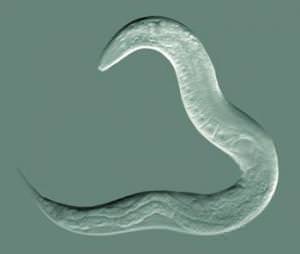 If you think life’s too short, then you’re not alone. A team of scientists set out to find what it would take to live a very long life and they made important discoveries that bring longer life spans much closer to reality. A new research report featured on the cover of The FASEB Journal, describes how scientists “activated” life extension in the roundworm C. elegans, and in the process discovered a new metabolic state correlating with long life.
If you think life’s too short, then you’re not alone. A team of scientists set out to find what it would take to live a very long life and they made important discoveries that bring longer life spans much closer to reality. A new research report featured on the cover of The FASEB Journal, describes how scientists “activated” life extension in the roundworm C. elegans, and in the process discovered a new metabolic state correlating with long life.
The discovery was reported by lead author Jeffrey A. Butler and corresponding author Shane L. Rea, of the Barshop Institute for Longevity and Aging Studies and the Department of Physiology at the University of Texas Health Science Center at San Antonio, in collaboration with Natascia Ventura, of the Department of Experimental Medicine and Biochemical Sciences, University of Rome Tor Vergata, and Thomas E. Johnson, of the Department of Integrative Physiology, Institute for Behavioral Genetics, University of Colorado.
To determine the cause of these metabolism changes, scientists created a new method for collecting cellular waste and studied it to identify the specific chemical reactions. They found that that the worms achieved long life through changes in how their cells extracted energy (metabolic state). Although C. elegans often is used as an animal model for human biology, more research is needed to determine if an equivalent metabolic state could be created in humans with the same results.
“C. elegans has provided a useful animal model for human biology,” said Gerald Weissmann, M.D., Editor-in-Chief of The FASEB Journal, “because of their relative simplicity and our understanding of the genes that control their metabolism. Helping these worms to live longer is a proof of concept; indeed much of what we now know about human aging was first worked out in these worms.”
“This research on worms shows that the secret to a long life comes from how we extract energy from our food,” commented Weissmann. “With any luck, we’ll be able to change human life in the same direction: onward and upward!”
Source: J. A. Butler, N. Ventura, T. E. Johnson, S. L. Rea. Long-lived mitochondrial (Mit) mutants of Caenorhabditis elegans utilize a novel metabolism. The FASEB Journal, 2010; DOI: 10.1096/fj.10-162941











